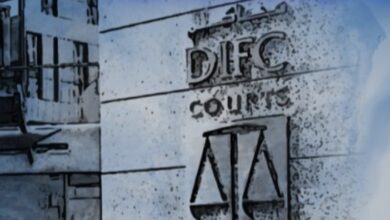Blockchain Can Fix One of Government’s Biggest Transparency Gaps
GovBlockchain, a new model from American University of Sharjah, boosts public spending transparency and positions UAE as a leader in digital governance.

In a time when public trust in institutions is declining worldwide, transparency isn’t just a value; it’s a necessity. For governments especially, the ability to demonstrate accountability and openness can either strengthen legitimacy or erode it entirely.
One of the most persistent transparency gaps exists in the area of government procurement. Around the world, even in mature democracies, data on how public money is spent is often fragmented, inconsistently disclosed or inaccessible to the average citizen. In the United States, where I focused my recent research, this problem is well documented. Despite decades of reform efforts and tools like USAspending.gov, public access to detailed and timely federal spending information remains limited. Agencies often delay data release, obscure contract details or rely on outdated systems that hinder full transparency.
Reports by the U.S. Government Accountability Office have flagged issues ranging from unreliable procurement data to classification errors and lags in reporting. In some cases, contract details are missing entirely from public databases for months. Platforms intended to inform the public, such as the Federal Procurement Data System, have been criticized for inconsistencies and a lack of usability. These challenges restrict public oversight and reduce trust in how taxpayer funds are used.
To address these issues and others, I set out to develop a model that could offer a solution.
The result is GovBlockchain, a blockchain-based framework developed by my team and me at American University of Sharjah (AUS), designed to make government spending traceable, tamper proof and accessible to all stakeholders. Rooted in the principles of open government, the model reimagines how data is shared.
The research, recently published in the International Journal of Information Management Data Insights, which ranks in the top 1 percent of journals in its field globally, follows a design science research approach: creating practical solutions to real-world problems. Using the open-source blockchain platform Hyperledger Fabric, we applied the model to government procurement workflows to test how well it could track bidder selection and involve participants like sellers, contractors, auditors and regulators.
The results were clear: stakeholder visibility improved, data integrity was preserved, and the opportunities for manipulation or selective disclosure — where only some information is made public while key details are hidden or delayed — were significantly reduced.
From Technical Efficiency to Public Trust
As we tested the system, it became clear that blockchain offers more than just technical efficiency. It has the potential to make government data more visible, trustworthy and complete. In traditional systems, data is often released selectively, controlled by the agencies managing it. This kind of selective disclosure allows institutions to shape the public narrative by sharing only what they want people to see.
While our model doesn’t solve every challenge related to public spending transparency, it represents a significant step toward more open and accountable systems.
Blockchain is fundamentally a technology of trust. Once information is entered — whether a contract, invoice or payment — it stays recorded permanently. With the use of Hyperledger Fabric, GovBlockchain goes a step further and uses cryptographic tools to verify identities, meaning that only authorized individuals can access sensitive data while still maintaining transparency and privacy.
This level of data integrity is virtually absent in legacy systems, where outdated technologies routinely enable withholding or filtering of public information. By using GovBlockchain, governments could not only eliminate these types of vulnerabilities, they could create a shared, transparent system accessible to all stakeholders. In this way, GovBlockchain helps to decentralize government accountability, not by removing oversight, but by ensuring that transparency around public spending is automatic and irreversible. This changes the rules of the game.
While our model currently focuses on procurement, its principles can and should be extended to other domains such as public services, healthcare, law enforcement and real estate.
Of course, integrating this model into an existing bureaucracy is no easy task. For blockchain to succeed at scale, governments need to address interoperability, scalability and user experience. The system must be accessible — not just rows of technical data sheets but intuitive platforms that citizens can understand and engage with. It must also be supported by staff training and public awareness campaigns. Most importantly, it must complement, not complicate, existing systems.
Fortunately, the UAE is one of the few countries positioned to make this leap.
The Emirates Blockchain Strategy 2021, Dubai Blockchain Strategy and UAE Digital Government Strategy 2025 all highlight the country’s ambition to become a global leader in transparent digital governance. We have already seen practical implementations, from blockchain-based real estate tokenization by DAMAC Group to secure law enforcement data sharing through Dubai Police’s partnership with Cardano, a blockchain platform for decentralized identity and data, co-founded by Charles Hoskinson, one of the co-founders of Ethereum. These examples suggest that the right conditions are in place for a solution like GovBlockchain to be implemented.
GovBlockchain is not a silver bullet. No technology is. But it is a credible, tested and scalable model with the potential to positively transform how governments manage, share and safeguard public spending data.
In the United States, the challenge is often overcoming fragmented systems and institutional inertia, whereas in the UAE, the challenge is different, but so is the opportunity. With our clear national strategies, culture of performance and strong expectations of public sector accountability, we are well-positioned to move quickly where others hesitate.
If we are serious about trust, transparency and digital transformation, blockchain is more than a tool. It is a test — a test of how deeply governments are willing to embed transparency and accountability into the systems that serve the nation. With models like GovBlockchain, the UAE is not only ready to meet that test — it is uniquely positioned to lead it.





